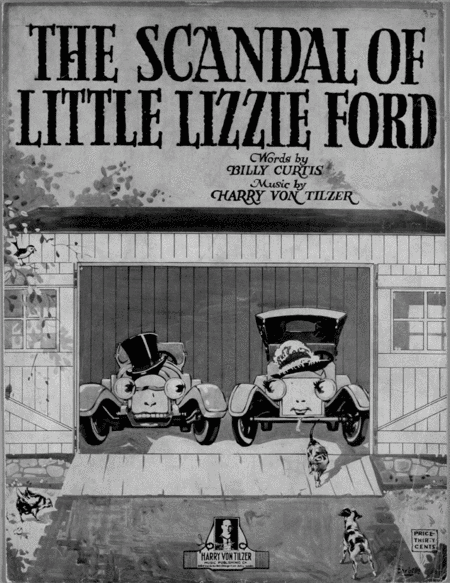Piano and voice - Digital Download SKU: LV.18900 Composed by Harry Von Tilzer. Garages, Automobiles, Dogs, Cats, Chickens, Cartoons, Traffic accidents, Quarreling, Smoking, Intoxication. Lester S. Levy Collection. 5 pages. Published by Johns Hopkins University Sheridan Libraries (LV.18900). The Scandal of Little Lizzie Ford. Words by Billy Curtis. Music by Harry Von Tilzer. Published 1921 by Harry Von Tilzer in New York. Composition of strophic with chorus with piano and voice instrumentation. Subject headings for this piece include Garages, Automobiles, Dogs, Cats, Chickens, Cartoons, Traffic accidents, Quarreling, Smoking, Intoxication. First line reads There's been an awful scandal, up in our neighborhood.. About The Lester S. Levy CollectionThe Lester S. Levy Collection of Sheet Music consists of over 29,000 pieces of American popular music. Donated to Johns Hopkins University Sheridan Libraries, the collection's strength is its thorough documentation of nineteenth-century American through popular music. This sheet music has been provided by Project Gado, a San Francisco Bay Area startup whose mission is to digitize and share the world's visual history.WARNING: These titles are provided as historical documents. Language and concepts within reflect the opinions and values of the time and may be offensive to some.
